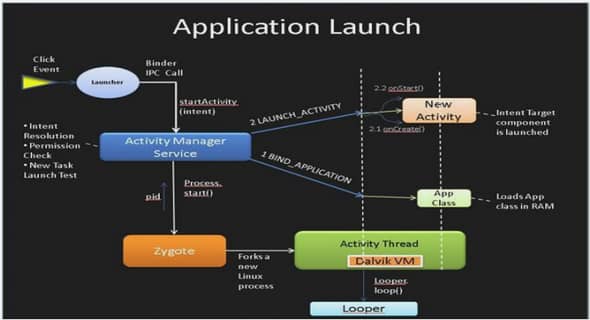Synthesis and Engineering Porosity of Mixed Metal Fe2Ni-MIL-88B Metal-Organic Framework
Sample preparation
In a typical synthesis, 0.67 mmol of FeCl3.6H2O 99%, 0.33 mmol of corresponding Ni(NO3)2.6H2O 97% and 1 mmol of bdc 98% were dissolved in 10 ml of DMF. To this clear solution, 0.4 mmol of NaOH was added under stirring for 15 min. The mixture was then transferred into a Teflon-lined autoclave and heated at 100 oC for 15 h. Solid product was then recovered by filtration and washed several times with DMF. Elemental analysis of the synthesized sample showed Fe 12.5 wt%, Ni 6.2 wt%, N 5.3 wt%. Thus, the suggested formula Fe2NiO(OOC-C6H4-COO)3.3DMF is designated as Fe2Ni-MIL-88B.DMF. The sample was treated with water, pyridine (Py), pyrazine (Pz) and 4-,4‟-bipyridine (Bp) to obtain Fe2Ni-MIL-88B.H2O, Fe2Ni-MIL-88B.Py, Fe2Ni-MIL88B.Pz and Fe2Ni-MIL-88B.Bp, respectively (see Supporting Information). For comparison, the single metal Fe3-MIL-88B.DMF was also prepared using the procedure of Férey et al.30
Characterization
N2 and CO2 adsorption tests were carried out in an Autosorb 1 instrument, before analysis the samples were outgassed in vacuum for 3 hours at 150 oC. Specific surface area was calculated with the BET model in the linear range of P/Po = 0 – 0.15. FTIR was carried in a FT-BIORAD 450s system using KBr disc. UV-VIS was carried in a Cary 300 instrument using MgO disc. Powder X-ray diffraction (XRD) patterns were collected on a Bruker SMART APEX II X-ray diffractometer with Cu Kα radiation (λ = 1.5406 Å) in the 2θ range of 1 – 50° at a scan rate of 1.0° min–1. For XRD measurement of samples in Figure 1 and for crystal lattice calculation, the samples were dried in vacuum overnight at 100 oC, then the analysis was taken immediately. Scanning electron microscopy (SEM) images were taken on a JEOL 6360 instrument at an accelerating voltage of 3 kV.
Synthesis of Mixed Metal Fe2Ni-MIL-88B with Different Terminal Ligands
Details of the synthesis and ligand exchanges are described in the experimental section and in Supporting Information. Elemental analysis of the synthesized sample showed Fe 12.5 wt%, Ni 6.2 wt%, N 5.3 wt%. Thus, the suggested formula Fe2NiO(OOCC6H4-COO)3.3DMF is designated as Fe2Ni-MIL-88B.DMF. The sample was treated with water, pyridine (Py), pyrazine (Pz) and 4-,4‟-bipyridine (Bp) to obtain Fe2Ni-MIL88B.H2O, Fe2Ni-MIL-88B.Py, Fe2Ni-MIL-88B.Pz and Fe2Ni-MIL-88B.Bp, respectively. For comparison, the pristine Fe3-MIL-88B.DMF was also prepared using the procedure of Férey et al.30 .The XRD patterns of all of Fe2Ni-MIL-88B samples were collected, however, due to the flexibility of the MIL-88B structures, which will be explained in the next session, the best way to determine the structure of the samples is to compare the completely dense phase Fe2Ni-MIL-88B.H2O with the XRD simulation of the standard Fe3-MIL-88B. As showed in Figure 6.1, the XRD of the Fe2Ni-MIL-88B.H2O is identical to the simulation one, in addition no guest phase is found, implying the MIL-88B structure with the high purity of the sample.
Reversible Breathing Control Using Terminal Ligand
The breathing behavior of the MIL-88B has been well documented by Férey et al.8 and can be studied in details by investigation of the XRD patterns in the 2 range from 7 to 12o. Figure 6.3 shows the XRD patterns of the mixed metal samples with different terminal ligands, which also confirms the MIL-88B structure. For comparison the XRD pattern of Fe3-MIL-88B is also displayed. As Férey et al. have reported,8 the swelling up of MIL-88B structure causes the splitting and shifting to low 2 of the plane (100) and (101), while the plane (002) is shifted to higher 2. Thus these planes can be used as the indicators of the swollen (open) phase as well as the dense phase in the samples. In Figure 6.3, the planes assigned to the dense phase are in red and in box, while the ones assigned to the open phase are in black and without box. For the Fe2Ni-MIL-88B.H2O sample, only the dense phase is observed. The Fe2Ni-MIL-88B.DMF, Fe2Ni-MIL-88B.Py and Fe2Ni-MIL-88B.Pz samples feature both open phase and dense phase. The Fe2Ni-MIL-88B.Bp sample exhibits an open structure without any trace of the dense phase. Assuming the Fe2Ni-MIL-88B samples taking the same hexagonal lattice structure as the original Fe3-MIL-88B, calculations of the unit cell parameters using the assigned planes in Figure 6.3 were carried out. The results listed in Table 6.2 are in agreement with the plane assignment. Upon swelling, the lattice constant a increases from 11.0 Å to 14.4 Å while the c constant decreases from 19.1 Å to 17.5 Å. Consequently, these changes are reflected in the unit cell volume. The unit cell volume of the open phase is about 40 – 50 % higher than that of the dense phase. Obviously, the XRD patterns have demonstrated the effect of the terminal ligand on the swelling degree of the samples. In terms of steric hindrance, the terminal ligands can be classified into three groups: low hindrance of H2O, intermediate of DMF, Py and Pz and high hindrance of Bp. The small ligand water with low steric hindrance hence cannot swell up the structure. In fact, the Fe2Ni-MIL-88B.H2O sample exhibits a dense phase. The introduction of larger ligands DMF, Py and Pz with higher steric hindrance brings about the openness of the structure of the obtained Fe2Ni-MIL-88B.DMF, Fe2Ni-MIL-88B.Py and Fe2Ni-MIL-88B.Pz samples, but the openness is not full yet as some of the dense phase still remains. The samples show both open and dense phases. Eventually, the ligand Bp, which has the largest size and the steric hindrance among the terminal ligands used in this study, yields the fully opened Fe2Ni-MIL-88B.Bp.


